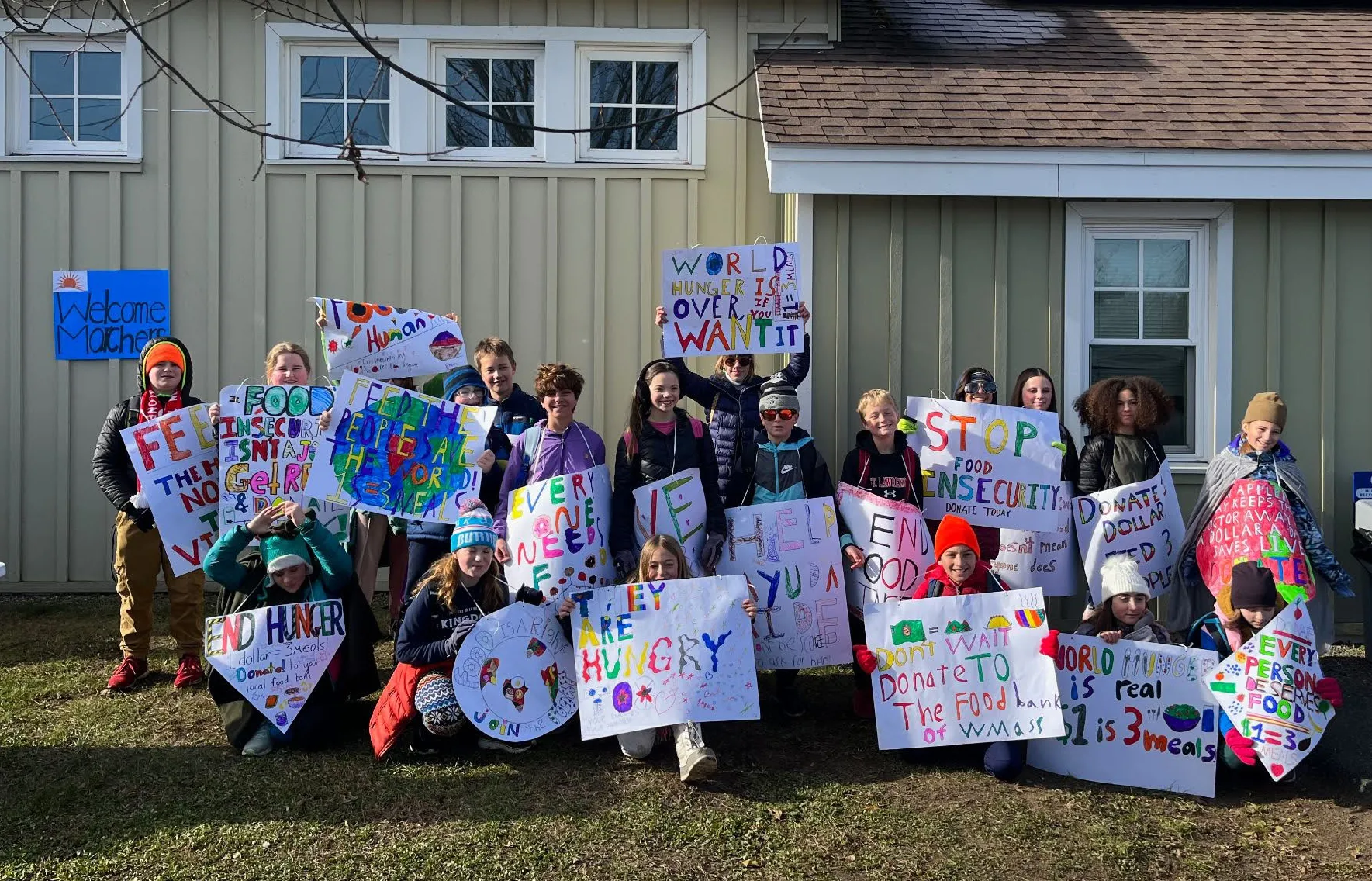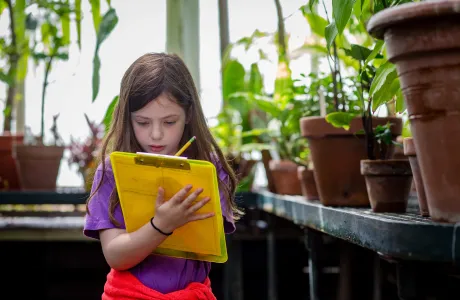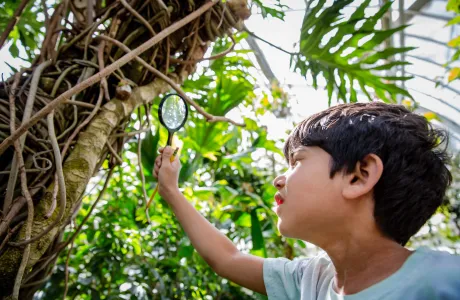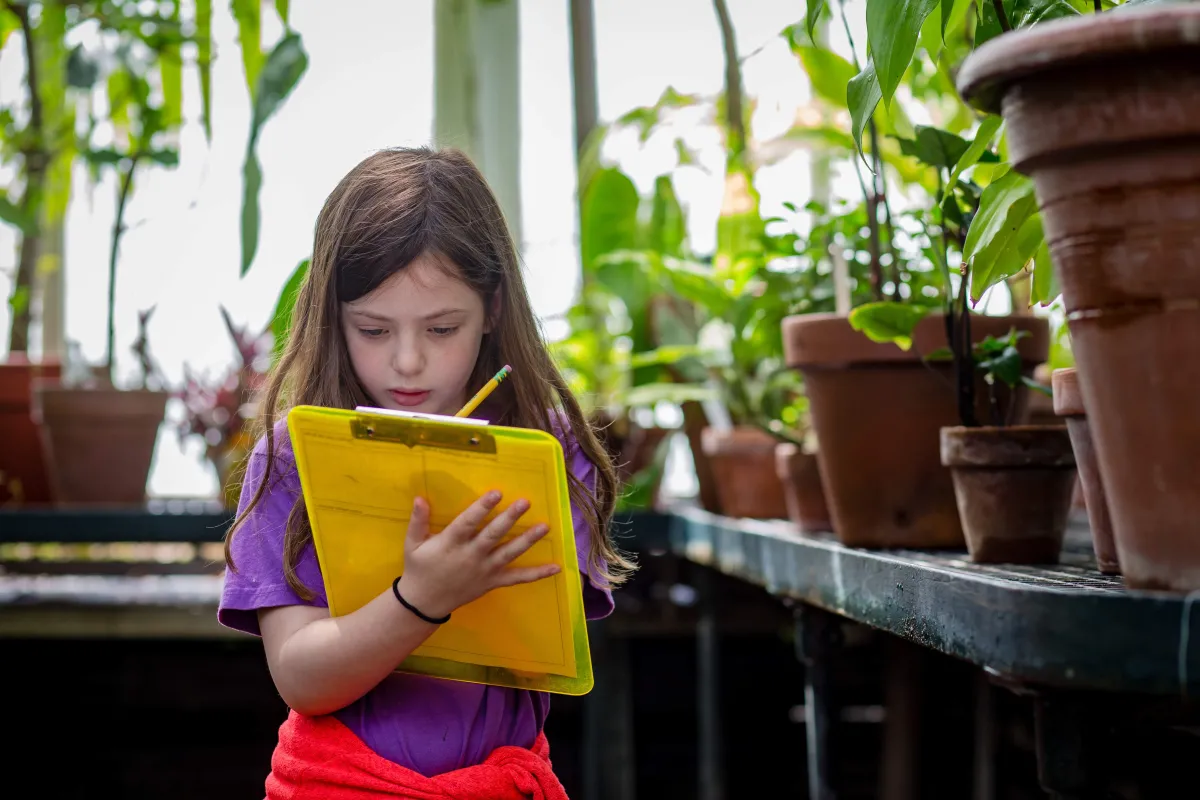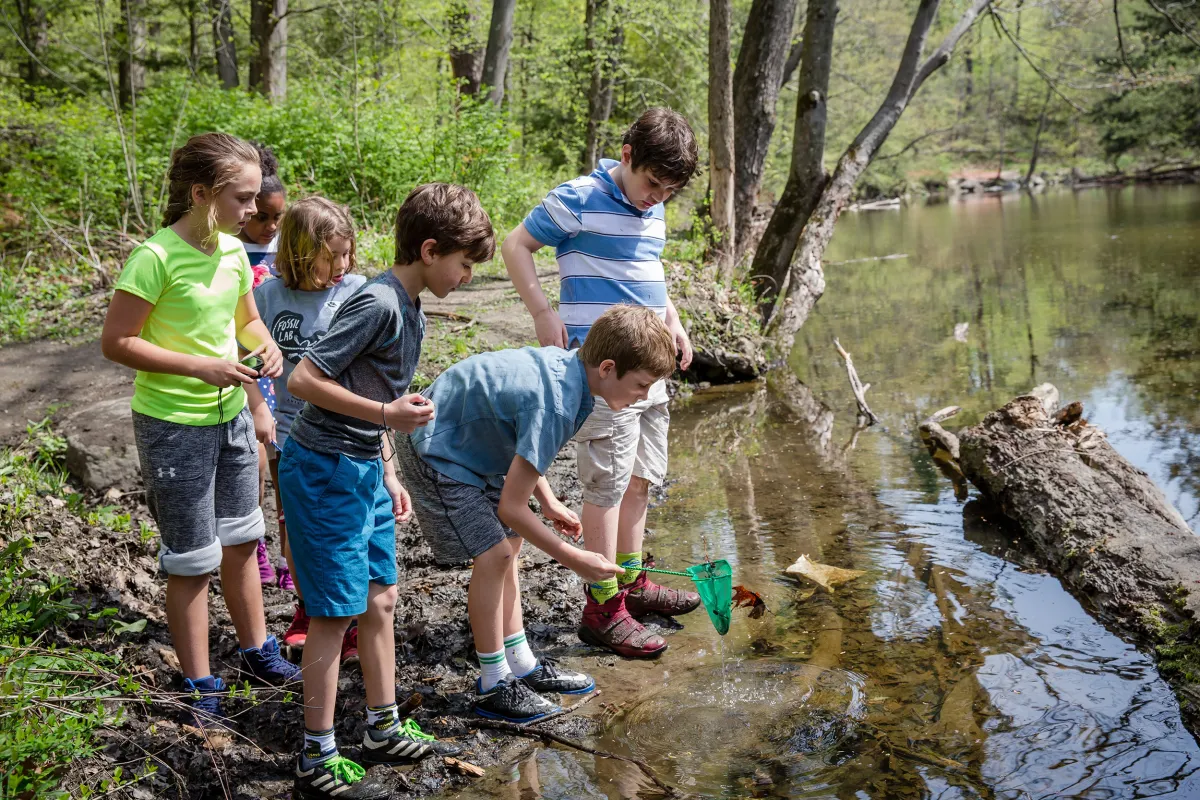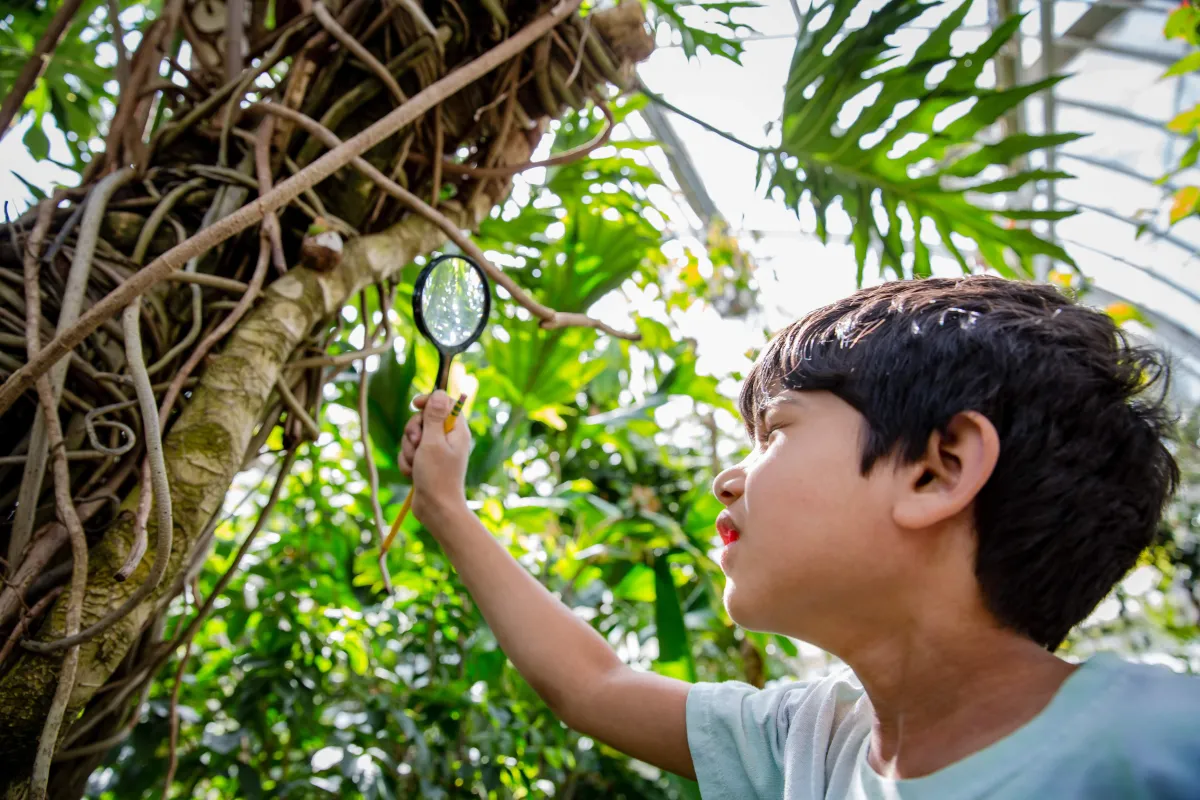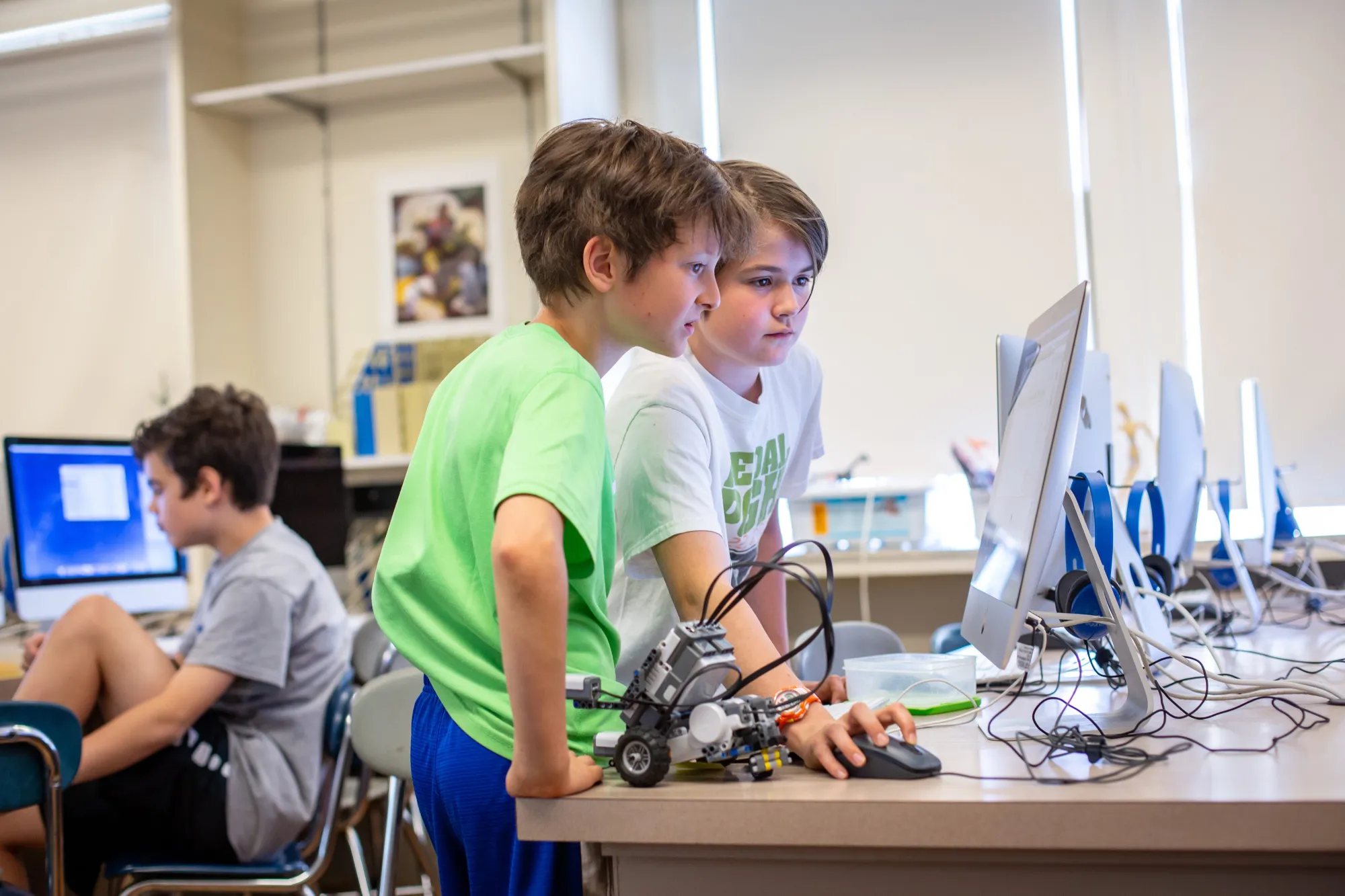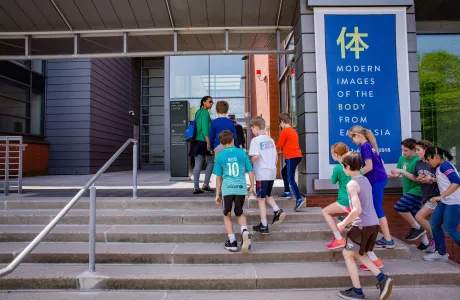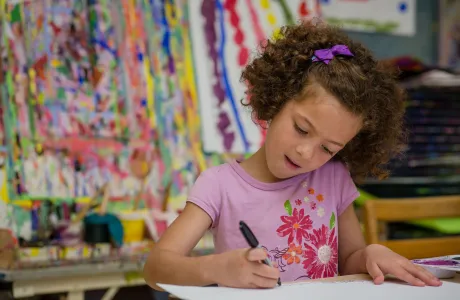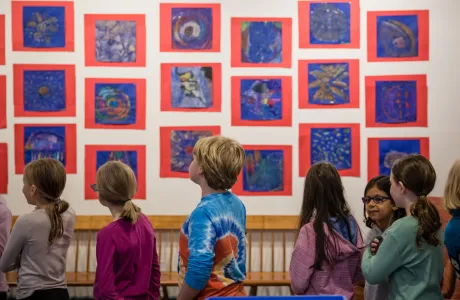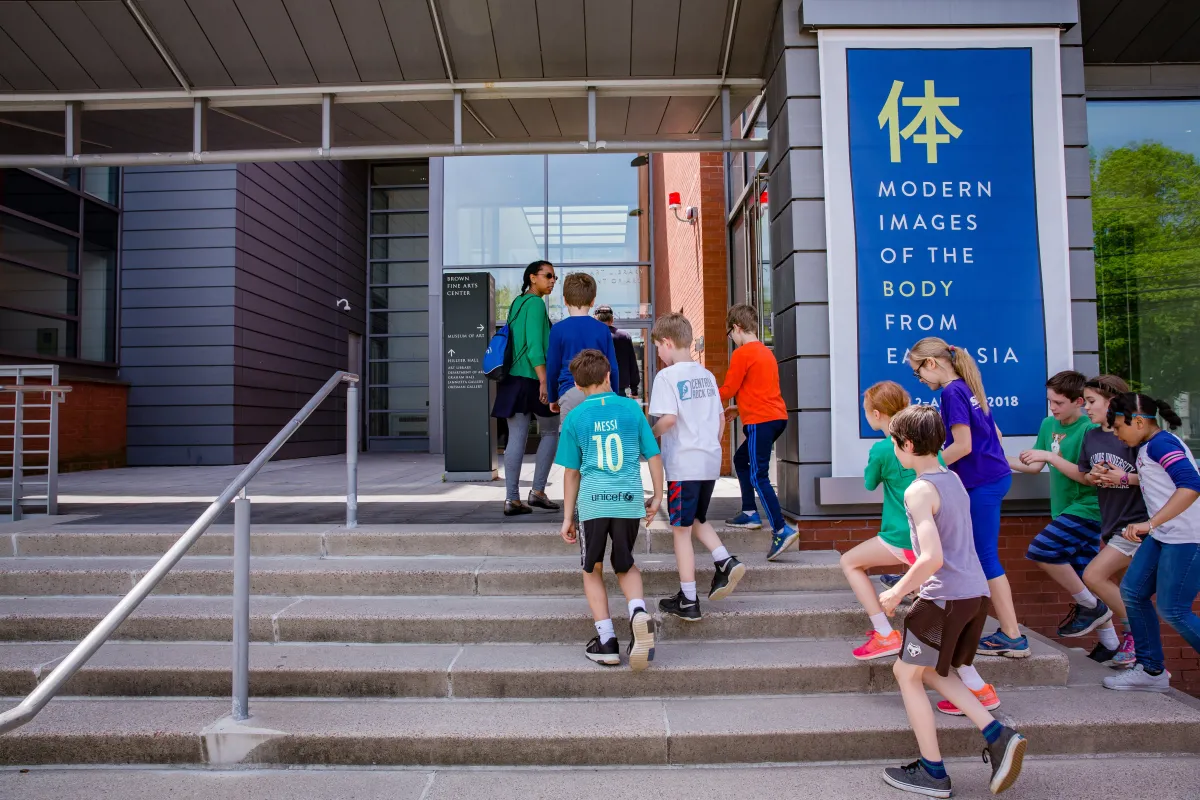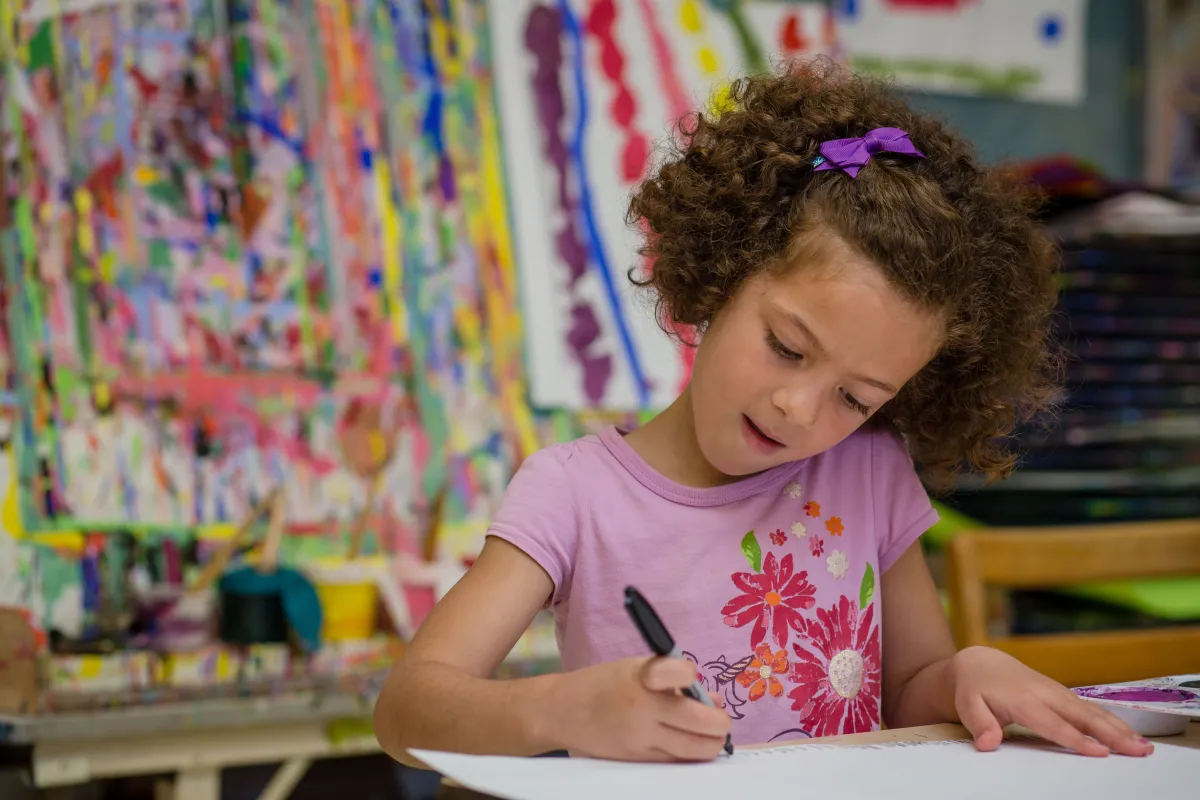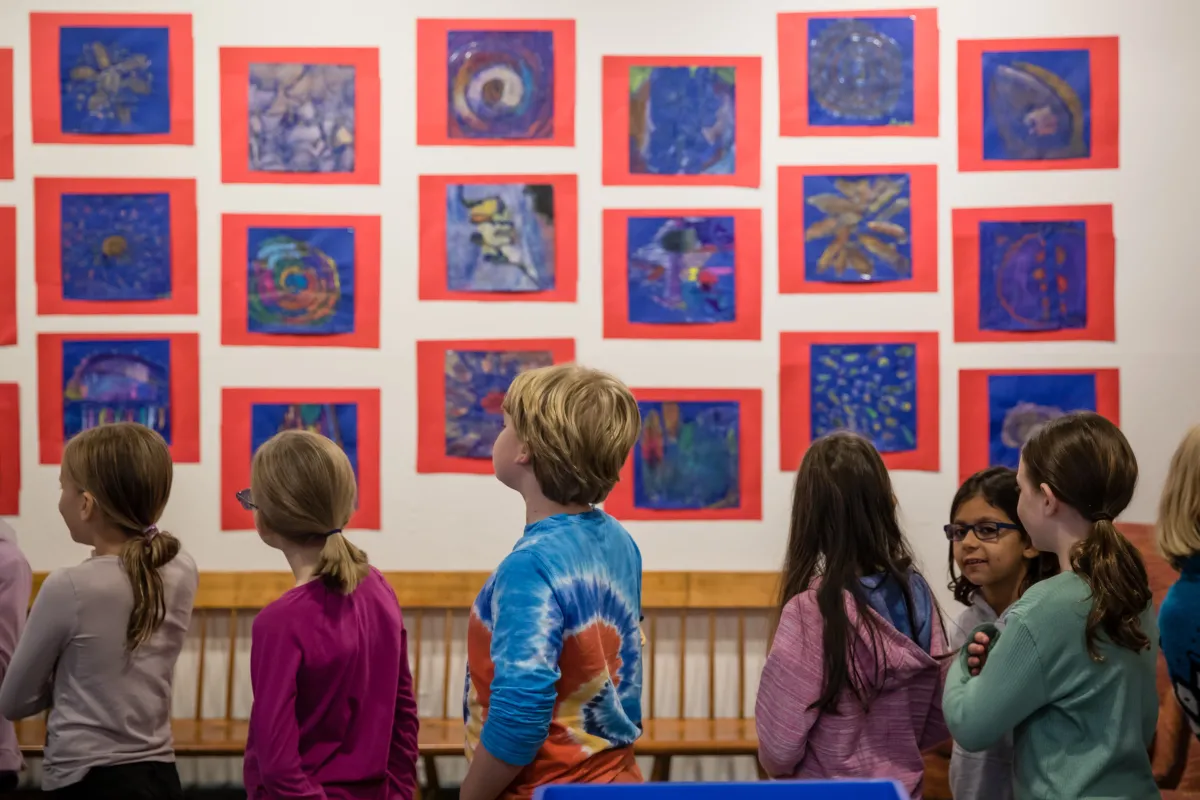Signature Programs with Smith College
At Campus School, students are interdisciplinary learners. They are knowledge-builders, community-builders, researchers, change agents and advocates, design thinkers, and performers who regularly engage with improvable ideas. The learning of Campus School students is driven by curriculum that is deeply embedded within the experience of going to school on a college campus. Meanwhile, we warmly welcome the community to explore and learn at our school.
Signature programs are the contexts in which we partner and collaborate with Smith College in order to bring this curriculum to life. The experiences that emerge from our Smith partnerships are unique learning opportunities for Campus School students and teachers, Smith students, and college partners alike. Our campus opens out beyond the walls of our school and into our broader community.
Environmental Studies
Throughout their seven years at Campus School, students look closely at the natural world and consider the relationship between human beings and the environment. Students wonder about patterns in nature, come to recognize how people impact the earth, and analyze how geography has influenced the lives of people over the course of history. Campus School teachers collaborate with Smith scientists and practitioner experts to design and deliver curriculum that is responsive both to student curiosity and to current issues such as climate change and landscape design. Smith students join in our classroom studies as they engage in coursework with professors, bringing their own unique perspectives to our projects.
Campus School students at every grade level study science right outside our school doors. The Smith campus, which is part of an arboretum designed by Frederick Law Olmsted, is a lab for our curriculum. We can frequently be found by the Mill River and in the surrounding woods, alongside Paradise Pond, immersed in programming or inquiry at the Botanic Garden of Smith College, or exploring the nearby MacLeish Field Station. Project-based curricula engage students in a variety of roles related to environmental science, from gardeners and recyclers, to trout farmers and botanists, to geologists and ecologists. In the school garden, students learn about nutrition, plant science, composting, and food security. The fall harvest is shared with the Northampton Survival Center. A yearlong, intensive study of recycling in second grade is accompanied by ongoing, school-wide collections of recyclables, and each spring on Earth Day we celebrate sustainability practices at the school. Third grade students raise trout from fry and release them into the Mill River during our annual River Fest event. Our fourth graders may begin exploring the ecology of the rain forest in our computer lab, then visit the campus greenhouse to examine firsthand the kinds of smooth-barked plants that thrive in wet conditions. Fifth grade features a deep exploration of botany, while sixth graders study data science and climate change side by side. Sixth grade also includes a week-long experience at Outdoor Classroom, a much-anticipated opportunity to delve into environmental study that builds upon student learning from grades K through 5.
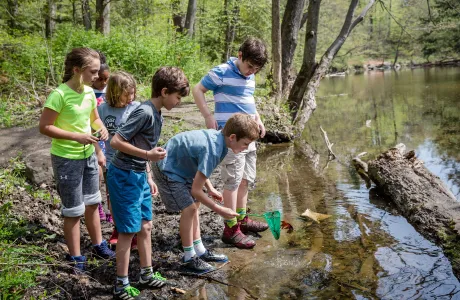
Design Thinking & Engineering
Students and teachers at Campus School agree that design thinking and engineering are fun! In these collaborative, hands-on, minds-on contexts, we try, fail, and revise solutions to authentic problems. As we engage in the process, we generate and communicate ideas while exploring materials and working with constraints to create and refine prototypes. We use technology as a research tool and as a means to make (and remake!) our ideas. We pull things apart, ask questions, experiment, and build. Freeing our imaginations becomes a necessary, exciting possibility in our work.
Campus School collaborates with the Design Thinking Initiative of Smith College to incorporate design thinking into existing and experimental curriculum that is intentionally aligned with the work and goals of both partners. Collaborations have included our sixth graders “paralleling” their learning about the design thinking process with the learning of Smith students in an introductory course, and then all of the students coming together to process the experience and outcomes. Fifth graders participated in a project with Smith students in an advanced design course, which explored the question of how landscape informs social spaces and the formation of communities through a case study of our playground. This work dovetailed with social studies units that hold up the same questions in different contexts. As a school, we have also partnered around original design projects with professors and their students who seek to engage with improvable ideas. For one project, our entire student body probed possibilities for redesigning our playground alongside Smith students who then had the opportunity to develop and propose innovative solutions to the problem of practice at hand.
In the early grades students dabble in generating creations that are sometimes open-ended and sometimes more defined. Wearable hats made from newspaper and masking tape or “cool shoes” made from a paper and pipe cleaners are two such creations. A community theme creates a context for our younger students to create sturdy, functioning models of structures that they see in Northampton using found objects and materials. In the middle grades, students regularly engage in design thinking and engineering tasks related to units of study. Students tap into their growing skills for communicating with peers as they collaborate to create prototypes of bridges that are stable and sturdy. As they create a working elbow joint, fourth graders build and reinforce their knowledge of muscles, ligaments, nerves, and bones. In the upper grades, students advance their understanding and skills in engineering and technology, learning, for example, how to build and program robots, and to edit and modify videos and photos. There is no shortage of possibilities for design thinking and engineering at Campus School, and we are always exploring this compelling vehicle for innovation around our curriculum.
Arts Integration
Access to, appreciation for, and literacy in a wide range of art forms are critical components of our students’ education from kindergarten through sixth grade. We seek to integrate the arts into the general curriculum in ways that immerse our students in studying, experiencing, and creating art, and infuse dimension, perspective, and interdisciplinary learning into all areas of study. At its best, arts integration is “an approach to teaching in which students construct and demonstrate understanding through an art form” (The John F. Kennedy Center for the Performing Arts). We embrace this philosophy from many angles. Our music, art, library, and Spanish classes regularly incorporate the general curriculum taught at each grade level and examine it through myriad arts integration techniques. Smith College dance classes perform at our assemblies, and the dancers teach our community about the history, culture and choreography of each piece. We also work closely with the Smith College Museum of Art (SCMA) to align units of study in grades K through 6 with frequent museum educator-led visits to the beautiful galleries that are just a short walk away and become extensions of our classrooms.
Yearly artist-in-residence opportunities allow our students opportunities to take on the role of performers and designers and to study the arts under the tutelage of master artists. Other performance-based learning opportunities include our instrumental music program that begins in first grade and is provided by professional musicians, our two annual fifth grade musicals, and our chorus, which frequently performs alongside the Smith College Chorus. Throughout their years at Campus School, students have numerous opportunities to perform on the elegant, historic Smith College stages in John M. Greene Hall and Sage Hall.
The Boutelle-Day Poetry Center at Smith College is another of our cherished campus partners. Through a recent collaboration, third graders engaged in a series of innovative poetry workshops designed by a Smith student studying with the director of the Poetry Center. Through the workshops, which were grounded in third grade’s year-long river and trout study, students learned about poetry as a genre of writing, wrote their own poetry, and created a form of visual art called broadsides, a Poetry Center tradition. The culmination of this project was a published book of poetry and artwork by each student, and a special reading at the Poetry Center.
Civic Engagement
Civic engagement is an integral part of the Campus School experience. It is intentionally interspersed throughout our curriculum and present in all of our other signature programs. It is our mission to develop students who are informed, engaged, empathic citizens, and who continually explore the questions of what it means to be a citizen, how to engage in productive dialogue, and what it takes to make change around inequity and other social issues. At every grade level students learn about history and the present alike by examining multiple perspectives, identifying and analyzing injustice, recognizing and honoring the contributions of people who make change, and exploring their own place in history. Becoming both critical thinkers and critical consumers of information is an important learning goal, and Campus School students are supported to develop and apply these skills in real life contexts such as the local community, through our college partnerships, and through the study of global challenges.
As students grow in our school, their understanding of personal action increases, and they are better able to develop and complete projects that support the greater community. Our students join March for the Food Bank with Monte Belmonte to raise awareness about food insecurity in Western Massachusetts. They hold clothing, book, food, and toiletry drives, and donate to giving organizations.
Positive participation in school and classroom culture is another way students develop and practice social engagement skills. Through classroom meetings, community building activities, mindfulness practices, and conflict resolution, students learn to cultivate, navigate, and maintain strong relationships. With these supports and experiences in place, students grow to independently put into action the prosocial ideas explored in their classroom, school, and broader communities.
